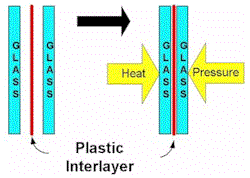Glossary
| BTU (British Termal Unit) | A precise measure of energy. The amount of energy required to raise the temperature of 1 pound of water 1 degree Fahrenheit. |
| Dual Pane (Double Pane) | Refers to the glass configuration in a window. It is made of two pieces of glass with an air space between the glass. This air space is sealed and provides the insulation value for the window.
For more information, see our Dual Pane Windows page. |
| Emissivity | The ability of a surface to emit radiant energy compared to that of a black body at the same temperature and with the same area (thermodynamics term). |
| Low E (Low Emissivity) | Low E stands for “low emissivity”. Low E glass is coated with a microscopic, virtually invisible, metallic oxide layer that improves thermal performance. The primary function is to reduce the U-value by suppressing radiative heat flow. A secondary feature is the blocking of short wave radiation to impede heat gain. |
| Laminated Glass | Laminated glass is two pieces of glass sandwiched together with a special plastic inner layer, which glues them together, stops vibrations, blocks UV light and prevents the glass from breaking into many pieces when it is broken. When it does break, it stays together – like your car’s front windshield, which is also laminated glass. |
| IGU (Insulated Glass Unit) | Dual pane window glass. |
| PVB (Polyvinyl Butyral) | The plastic interlayer in the middle of laminated glass; normally .030″ thick. |
| R-Value (Resistance Value) | Measure of thermal resistance used in housing insulation. |
| STC (Sound Transmission Class) | This number represents how much noise is stopped by something. The higher the number the better: the scale is logarithmic, meaning each number is significantly higher than the next, like the Richter Scale for earthquake measurement. For more information, see our page on STC Ratings. |
| U-Value | A measure of air-to-air heat transmission (loss or gain) due to thermal conductance and the difference in indoor and outdoor temperatures. As the U-Value decreases, so does the amount of heat transferred through the glazing material. The lower the U-Value, the better. The U Value can be illustrated as follows:
1 / the R-Value (which is really just a different way to say ‘R-Value’ mathematically) |
